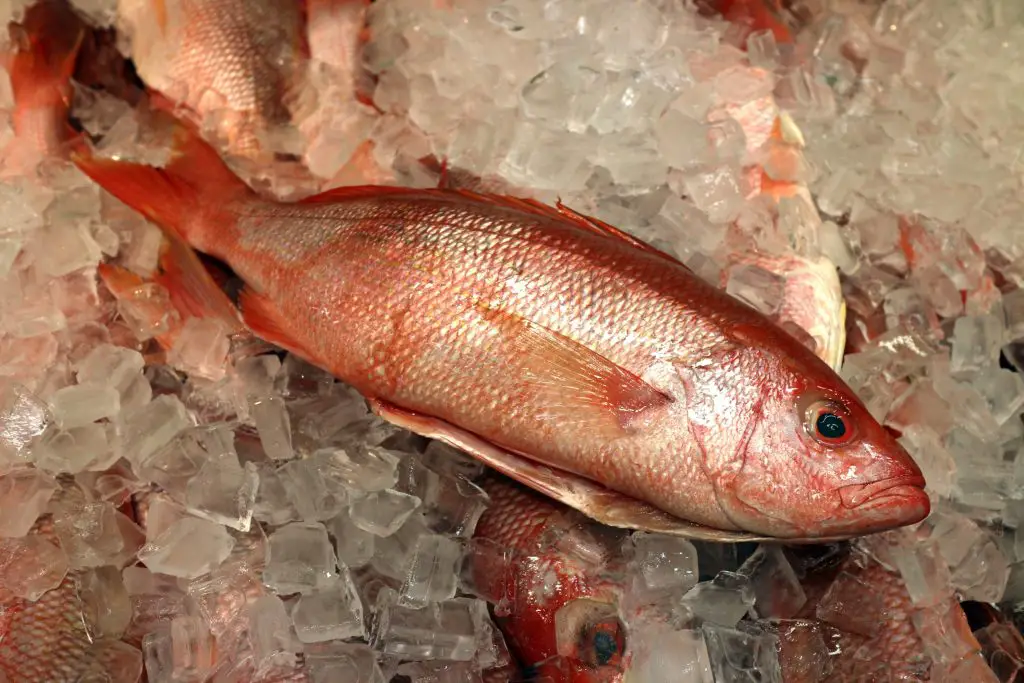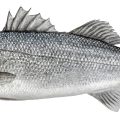Snapper meat is slightly sweeter and more delicate than grouper meat, especially when cooked. Most people equate its flavor and texture to that of halibut or sea bass. Conversely, grouper has a milder or more subtle flavor that is ideal for absorbing sauces or marinades. There are over 10,000 distinct fish species live in the deep waters of the Gulf of Mexico. This can make it tough to choose your desired goods. However, with good reason, some of the most sought-after species are often grouper or snapper. Though these fish are similar, several variances will be addressed further below.

How to Tell the Difference Between Snapper and Grouper
Grouper and snapper are both large fish families with a wide variety of strange and amazing fish. Nonetheless, there are certain distinguishing characteristics between snappers and groupers. Here’s a quick rundown of each family.
Snappers have a more angular face than Groupers. Their lips appear to be designed to snare fish that get too close. Groupers have large, wide mouths that are designed to swallow whole fish. Groupers are often rounder and thicker in build than snappers. Think of them as the reef’s bruisers, prowling around looking for a battle. Most snapper species appear leaner and nimbler.
Of course, this is not always true. A mature Red Snapper is substantially larger than a young Gag Grouper. Cubera snappers, like groupers, have large, broad lips. If you’re not sure what you’ve caught, compare it to popular species in your area.
Snapper vs Grouper: Location
Grouper and snapper can be found in our sunshine state’s coastal waters as well as the Gulf of Mexico. Grouper and Snapper both enjoy temperate and tropical environments; however, Grouper is known to be found significantly deeper than Snapper. Some groupers have been caught at depths of 200 feet or more. Furthermore, numerous grouper species have been found in brackish water and several in fresh water.
Snapper, on the other hand, prefers reefs in shallower waters and migrates offshore for spawning during the fall months. The Red Snapper is a bottom dweller that can be found around rocky ledges, ridges, and artificial reefs such as oil rigs.
Snapper and Grouper Varieties
Teleosts, or groupers, are a type of fish notable for their sturdy bodies and gaping jaws. There are at least 15 known species in the Gulf of Mexico, with the Goliath grouper being the largest. This beast has been known to weigh over 1,000 pounds, with small adults weighing in the triple digits. In general, groupers are larger than snappers and transition from female to male at a specific size. The Black Grouper, a popular choice in Florida, may often outweigh even the largest snapper, such as the Cubera.
The Red Snapper, Lane Snapper, and Vermillion Snapper are the most frequented snappers in our lovely Gulf waters. These species grow much smaller and are easy to catch. They are less likely to hide under rocky ledges or live in deeper depths. The largest snapper, the Cubera, can grow to be 4 to 5 feet long and weigh more than 100 pounds. The Red Snapper is the second largest and most sought-after snapper, which may reach up to 50 pounds.
Which Is the Larger?
Each of these fishy families contains some true behemoths. The Goliath grouper is the largest of the bunch. These colossi can weigh more than 1,000 pounds, and even “little” individuals are in the triple digits. They don’t even compete with other snappers and groupers. Let’s ignore them and focus on the other fish in each group.
Cubera is the largest Snapper species in North America. These ferocious beasts can grow to be 4 feet long and weigh far over 100 pounds. They’re big and don’t mind throwing their weight about. The next largest species after Cubera is the world-famous Red Snapper, which can weigh up to 50 pounds.
Snappers are large, though not nearly as large as groupers. Aside from Goliath Grouper, several species blow the biggest Snappers out of the water. The world record for Warsaw Grouper is 436 pounds and 12 ounces. The Red Snapper is outgrown by the Speckled Hind, Gag, and Snowy Grouper. A black grouper can weigh more than the largest Cubera. There appears to be more than one “goliath” in the family!
Price Comparison Between Snapper and Grouper
Domestic grouper, as previously said, is more difficult to obtain due to their preferred habitat. As a result, they are often more expensive, especially when combined with high demand. A whole grouper will cost $6 or $9 per pound at wholesale but will cost roughly $12 at retail. Snapper, on the other hand, is slightly less expensive, with a local whole fish costing around $10 per pound.
The phrase “grouper” appears to be in great demand for restaurants, particularly in Florida, which contributes to higher rates for visitors out for a night on the town.
Is It Better to Catch Grouper or Snapper?
Snapper is slightly more delicate than grouper, and when grilled, it produces a more intense and sweet flavor – one of the greatest and most popular methods to serve it.
What Exactly Is the Distinction Between Snapper and Red Snapper?
The most noticeable difference between the two Snappers is their size and overall shape. Vermilion Snappers are small and slender, but Red Snappers are larger and have a deeper body. On the other hand, Vermilions have a lot more forked tails than reds. The eyes are the next big giveaway.
What Is the Most Costly Type of Grouper?
Neptune grouper is one of the most expensive fish in the world, costing $6,000 per pound. They reside at depths ranging from 260 to 800 feet and are extremely tough to catch. An astounding fact about this fish is that it is only expensive when living because once it dies, it is merely $50.
What Sort of Grouper Has the Best Flavor?
The yellow edge is the most common fish taken with deep-droppers, except for golden tilefish, which prefers deeper waters, and they are nearly universally regarded as the greatest tasting member of the entire grouper tribe, if not better.
What Is the Distinction Between Black and Red Grouper?
The flavor of red grouper is sweeter and milder than that of black grouper. They both have a very hard texture, a lot of flake, and a lot of moisture retention. Groupers are typically caught using hook and line or long line fishing techniques.
Conclusion
Snapper and grouper are valuable commercial fishing resources for exporters to major international markets. Many local, small-scale fishing communities worldwide rely on fishing for their livelihoods and food security. Snapper and grouper are nearly identical. Snapper, however, has a slight edge in terms of flavor. Snapper’s flesh is white with a little pink hue from its red skin. The meat has a juicy, solid, yet delicate quality. The flavor of the grouper is unique but mild.











Pingback: What is a Malabar Grouper? | Reel Fishing Guru